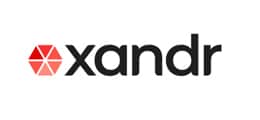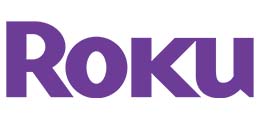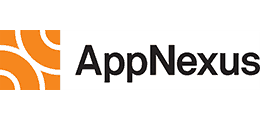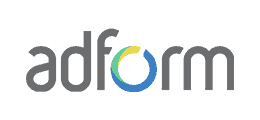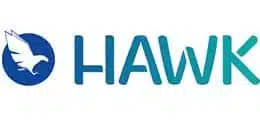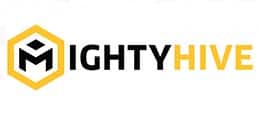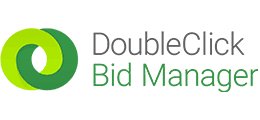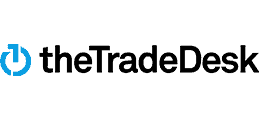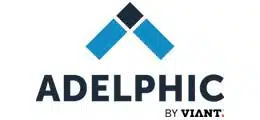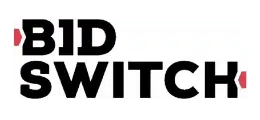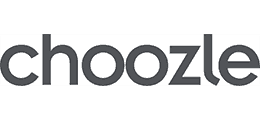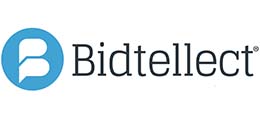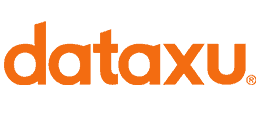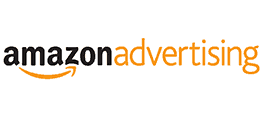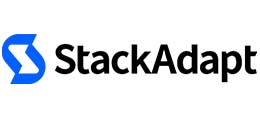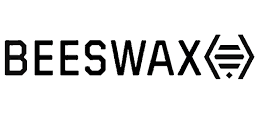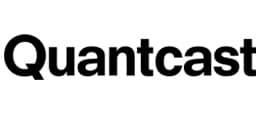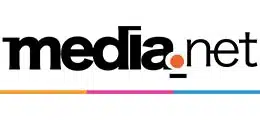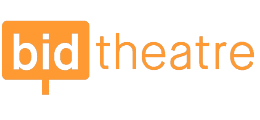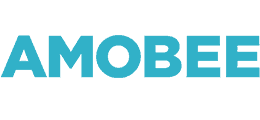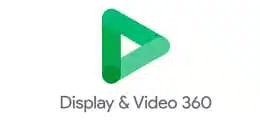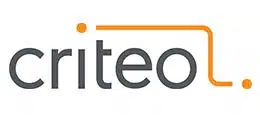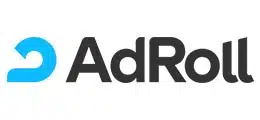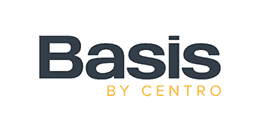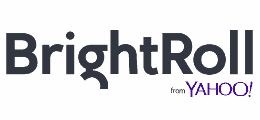What Is Programmatic Advertising?
Bringing attention to your brand is never a simple venture. In today’s age, it is especially important to look at what digital systems and methods one can implement into their marketing strategy. For a while now, the term “Programmatic Advertising” has been popular in the marketing industry.
One method of marketing that is becoming increasingly popular is Programmatic Advertising. But what exactly is Programmatic Advertising, and what are the benefits of implementing this technology into one’s business?
Let’s take a look at how this form of advertising can take your marketing to another level.
What is Meant by Programmatic Advertising?
Programmatic Advertising can be simply defined as the automation of selling and buying online advertising. This type of automation makes executing transactions easier and more effective by streamlining the advertising process and condensing your advertising actions into one single platform. Programmatic ad tech is the automated purchase of digital advertising space, with computers using data to determine which ads to purchase and how much to pay for them. For media buying, programmatic advertising employs automated technology and algorithmic tools. It is one of the advertising techniques in which you can monitor your campaign in real time. This technique utilizes automated technology for eliminating manual tasks. From the above discussion, it has become clear that programmatic advertising is generally used for advertising. Therefore, advertising agencies must not get confused between marketing vs advertising for the use of programmatic advertising.
There are millions upon millions of websites online today that are constantly being viewed around the world. Trying to use multiple platforms to advertise in different areas of the web is immensely difficult and time-consuming. Not to mention how challenging it is to discover a suitable location to post your ads using a disruptive approach in order to reach your intended audience. Disruptive Advertising (Ads) meaning refers to the practice of implementing creative and attention-grabbing ways to advertise items or services in the context of programmatic advertising. The purpose of disruptive advertising is to interrupt the user’s surfing experience in such a way that it attracts their attention and prompts them to act. Programmatic Advertising can automate this process so that you can focus on other important aspects of your business. Advertisers and publishers may not always work one-on-one to serve ads in programmatic advertising.
There are open auctions and private marketplaces. Private marketplaces (PMPs) are similar to open auctions in that they limit who can participate. PMPs are only available to selected advertisers by invitation. In some cases, however, publishers may have a selection process in place that allows advertisers to apply for an invitation.
Data plays a major role in this advertising technique. Tactics are implemented to divide audiences into groups that are relevant to specific advertisers so those advertisers will only have to pay for ads that are in front of who they want at the right time. Traditional forms of online advertising don’t really use this tactic, so advertisers are left to sit and hope that the right potential customer will see their ads. Data insights and algorithms are used in programmatic media buying to serve ads to the right user at the right time and at the right price.
Dynamic creative optimization (DCO) allows advertisers to offer highly relevant and personalized ads to their targeted groups when combined with the power of artificial intelligence, which provides the necessary data and insights to deliver more precise messaging to the right users. Data insight has been made easy after the advent of this technology. Programmatic also uses traffic data and online targeting techniques to deliver impressions more precisely, effectively, and at scale, improving ROI for both publishers and advertisers.
Ad inventory is typically acquired through a real-time auction. Advertisers can target the right audience by buying per impression through programmatic channels. Because the process is automated, programmatic media buying guarantees speed and efficiency that traditional media buying processes cannot match. There are various kinds of programmatic advertising. These should not be confused with the actual programmatic platforms. Programmatic advertising types are simply how an advertiser purchases ad inventory. Many experts believe there are four pillars of programmatic success- inventory, data, knowledge and technology.
Programmatic techniques really leverage algorithms to make the act of buying, placing, and optimizing ads much more efficient and quicker. Every Programmatic Advertising platform that you’ll look into will have machine learning and AI at its core that is constantly analyzing campaigns and learning new algorithms for buyers. Users who are very likely to be converted and become customers or buyers of your product can be quickly targeted this way. There are various platform types, some of which provide fully or partially managed services.
Programmatic Direct is a method of purchasing a set number of impressions on specific websites. Advertisers can be assured of ad space on specific publisher sites with programmatic direct buying, but there is less ability to fine-tune audience targeting. To ensure the best digital ad placement mix, many programmatic buyers use both RTB (real time bidding) and programmatic direct. The traditional approach to media buying is followed by programmatic guaranteed, also known as programmatic direct or automated guaranteed. In this case, the advertiser and publisher negotiate the terms one-on-one. Unlike the other types of media buying we looked at, programmatic direct does not use a bidding process.
RTB (Real time bidding) refers to a real-time auction of advertising space on a website. RTB is regarded as a cost-effective method of purchasing media with a large audience. Real-time bidding is an advanced version of ad networks in which ad inventory is purchased and sold in real time on a per impression basis through a programmatic auction or bidding system, similar to financial markets. With real-time bidding, advertisers or buyers place a bid on an impression, and if he wins, the buyer’s ad is displayed on the publisher’s website immediately. Real-time bidding begins when a user is about to visit a website. This initiates a bid request from the publisher’s end, which may include additional factors such as the user’s demographics, browsing history, location, device, operating system, and browser, among others. This occurs while the page is still loading. In less than a second, programmatic advertising makes it possible to buy and set ads.
What is an Example of Programmatic Advertising?
Many multinational companies have used this technique in their digital campaign to increase their traffic. For example, Google started using programmatic advertising in 2014 to increase its brand awareness. Google also made use of the possibility of real-time campaign optimization, reusing campaign data to enhance its digital approach. Google Ads (formerly Google AdWords) is a type of DSP, but its inventory is limited to Google’s. Despite having access to over 2 million websites, the Google Display Network has no reach in some areas. Google Ad Exchange (AdX) is an ad exchange where DSPs and SSPs can buy and sell advertisements. Every company has its own programmatic strategy.
What are the 4 Main Components of Programmatic Advertising?
Programmatic ecosystem consists of various types of advertising. Every programmatic advertising platform has four components.
- Demand Side Platform (DSP)
This platform enables advertisers to buy ad inventory across multiple platforms at the same time. DSPs choose advertising space on their behalf in accordance with the advertisers’ targeting and budgetary requirements. Based on the user’s characteristics and the website, it values the placement of the advertisement. Advertisers submit bids to a DSP, and the platform makes the final decision.
A DSP stores user profiles and third-party data and combines it with advertiser bids. When visitors land on web pages, the DSP decides which ad to serve where. With the aid of a DSP, advertisers and their agencies are able to purchase ad inventory from various publishers. A data management platform (DMP), which manages audience data, is used by the DSP to guarantee that the advertisements are directed at the appropriate audience. The DSP is linked to the ad exchange, allowing advertisers, agencies, networks, and publishers to buy and sell ad space.
Your consumers have greater influence over the data they provide with your business when you gather 1st party data directly from them. However, it does imply that your company must provide enough value in return for consumers’ data for them to consider it worthwhile.
The SSP serves as the publisher’s agent as it informs advertisers of the site’s, user’s, and ad space characteristics so that DSPs can place their bids. In essence, they promote the ad space as a product that is for sale. Publishers can sell display, mobile, and video ad impressions to interested parties automatically and in real-time using this software. This includes ad networks, exchanges, and DSPs. Inventory and CPMs are now more in the hands of publishers. A publisher uses an SSP to sell ads in order to maximize the value the publisher receives from an impression. SSP is a software program that enables publishers to sell display, mobile, and video ad impressions to potential buyers in real time. An SSP can connect to multiple ad exchanges to increase the publisher’s exposure to potential buyers.
- Data Management Platform (DMP)
Data sorting and ad-buying decisions are supported by DMP. Without a DSP, a DMP is essentially just a file cabinet containing user data, and it is limited in what it can do. A DSP cannot choose where to purchase advertising space on its own. In order to provide advertisers with a more comprehensive solution, many Demand Side Platforms now directly integrate DMP solutions into their tools. In programmatic marketing, having the right data is critical. A data management platform (DMP) is an independent platform that collects, manages, analyses, and activates data.
- Ad Exchange
Publishers and advertisers can negotiate a price for the display of their ads on an ad exchange. Similar to a stock market’s trading floor, but for digital display advertising. Nowadays, the majority of ad exchanges run real-time auctions, where an advertisement is bought as a website visitor is loading it. Ad prices fluctuate on an ad exchanger where DSPs are connected, depending on how competitive the inventory is.
Publishers use a supply-side platform (SSP) to sell their ad space to brands, and brands and agencies use a demand-side platform (DSP) to decide which impressions to buy and at what price. Advertisers stop wasting money by delivering ads to leads with low quality by using this form of marketing. Therefore, we can conclude that programmatic advertising works through DSP, SSP, DMP, and ad exchange. In programmatic native advertising, publishers sell their ad slots through an SSP, and advertisers work with a DSP to decide which impressions to buy and at what price.
A DSP and an SSP are both connected to various parts of the programmatic ecosystem. Simply put, brands or agencies use a demand side platform (DSP) to decide which impressions to buy and how much to pay for them, whereas publishers sell ad space to brands via a supply side platform (SSP).
Ad servers collect all campaign information (reporting, audience) from publishers, ad networks, search, social, and other sources. Ad server platforms also track data such as impressions and clicks, which ad server companies or advertisers can use to monitor and optimize ad performance.
How Much Does Programmatic Advertising Cost?
The CPM (Cost Per Mille), also known as Cost Per Impression, model underlies programmatic ecosystem. The cost per 1000 ad impressions that appear on a website is known as CPM. CPM for programmatic advertising is typically estimated to range between $0.50 and $2. Depending on the list’s quality and the degree of targeting, CPMs can vary greatly. Your budget’s ability to pay will determine how much programmatic advertising will cost.
Programmatic CPMs are typically a more affordable alternative than other platforms and a much better investment than conventional offline methods. Thus, programmatic ads can be used by small businesses with limited marketing budgets as a component of their overall digital marketing plan. Generally, the advertising cost depends on the programmatic strategy of each brand.
Why Should I Use Programmatic Advertising?
Prior to programmatic ad buying, digital ads were purchased and sold by human ad buyers and salespeople, who can be costly and untrustworthy. By removing humans from the process wherever possible, programmatic advertising technology promises to make the ad buying system more efficient and thus cheaper. It has contributed billions of dollars to the online advertising market and is steadily growing in popularity each year. To be late to the game when it comes to this form of advertising could be detrimental to your business. As we mentioned before, owning an online business means that you constantly have to have your finger on the pulse of digital innovations for new trends like this. Companies use different ad formats to create a true cross-platform awareness campaign. Moreover, there is no need of human negotiation in programmatic media buying. This technique eliminates human negotiation in media buying.
There are several benefits of this advertising technique. This biggest benefit is, of course, you’ll be able to make more informed data-driven decisions and not have to focus so much time and energy on the advertising process. It is also a much more innovative and effective method of targeting. Due to the large amount of cross-platform inventory available, programmatic is the best way to buy ad inventory. There is currently no other method of advertising that allows advertisers to target audiences and utilize different tactics in this way. Campaign management is streamlined as well, meaning that you can condense campaigns in one system across multiple devices and formats. This allows you to visualize your campaign more efficiently. To maximize campaign efficacy in this fast-paced digital environment, marketers must be aware of the various types of ads available in programmatic advertising. It is also substantially easier for advertisers to access their ad inventories. An advertiser’s budget can be put to better use and spent more efficiently with programmatic targeting. Programmatic advertising enables advertisers to reach a large audience by purchasing ad space from any available ad inventory. This technique often results in a better ROI than other platforms.
With Programmatic Advertising platforms known as DSPs, advertisers can access the inventory across multiple exchanges at the same time while letting the algorithm do all the work. Programmatic advertising has the potential to help you thrive if you want to optimize ad spend, increase your organization’s ROI, and connect with your target audience. Digital ad spend is expected to increase in the coming years. Publishers can generate more revenue from their available ad space by using programmatic advertising, which can lower costs and increase margins for them.
Benefits of Programmatic Advertising
Programmatic technology offers several benefits to advertisers and advertising agencies. With a single click of the mouse, advertisers can access a massive amount of ad inventory across multiple ad exchanges and networks, including premium inventory and private marketplace with high-quality traffic. Multiple ad exchanges and networks are supported by programmatic advertising, giving advertisers access to far more ad space on thousands of websites at once. Advertisers can advertise on a large scale at a low cost and with no additional work. You can access inventory that isn’t covered by Google’s ad network by using a third-party self-service programmatic DSP, which is one of the main advantages.
As video becomes one of the most preferred mediums of content consumption, the popularity of programmatic ads grows. On average, programmatic CPMs are less expensive than social media advertising methods and provide significantly more value than traditional offline approaches. This means that even small businesses with limited marketing budgets can incorporate programmatic ads into their digital marketing strategy. A programmatic ad can be of any size or shape. The benefit of using programmatic ads is that you can tailor the content to your specific target audience. Furthermore, it gives marketers more time to optimize and improve ads using programmatic techniques to ensure campaign success.
The manual process between buyers (advertisers/brands) and sellers (publishers) tend to be time-consuming, expensive, and involves a lot of paperwork, request for proposals (RFPs), and negotiation, which makes the traditional/offline advertising model inefficient. Programmatic technology removes the hassle of manual media buying. Programmatic campaigns have traditionally been the domain of larger budgets and media agencies, but the rapid emergence of self-service tools has increased access to the technology for smaller brands and given them the chance to compete with bigger brands without using costly middlemen.
As an advertiser, you should have access to as much inventory as possible. This is especially important when running programmatic advertising campaigns, as it increases the likelihood of finding profitable placements. Brands can find a broader range of people looking for accommodation and target them with our book-direct message by leveraging advanced targeting capabilities through programmatic.
What is Programmatic in Digital Marketing?
The practice of using technology to market and sells goods and services is known as digital marketing. Programmatic refers to the use of software to automate the buying and selling of digital advertising in the context of digital marketing. Simply put, programmatic ad buying is the practice of purchasing digital advertising through software. In contrast to the conventional approach, which involves requests for proposals, tenders, quotes, and human negotiation, programmatic buying makes display space purchases using machines and algorithms. The marketing industry is dealing with a problem called digital ad fraud. Programmatic media buying proved really effective in combating this digital ad fraud. Programmatic technology stops this ad fraud by showing real time data.
It’s very likely that programmatic advertising technology is going to be the industry’s default advertising method in the future. It can effectively send messages across many preferred channels and reach the more desirable viewers while using data collected to find new lucrative advertising opportunities. Automation is already becoming a major aspect of digital businesses today, so it only makes sense that advertising innovations would start popping up as well. Missing out on this could result in a lost opportunity to save money and see better results with your advertising campaigns.
Gourmet Ads can help you navigate the Programmatic Advertising landscape. We’ve been running Programmatic Advertising Campaigns since early 2014 and have the experience and skills to help you achieve your business goals.
For more information, please read our “Guide to Programmatic Advertising”
Integrated Demand Side Platform Companies (DSPs)
For programmatic enabled Brands with In-house Trading Teams, Agency Trading Desks, Advertising Agencies, Retargeters or Independent Trading Desk, Gourmet Ads is built upon the Xandr tech stack and fully integrated Programmatically with the following Demand Side Platform Companies (DSP) enabling streamlined, transparent connections between Advertisers through to end-user Consumers.




